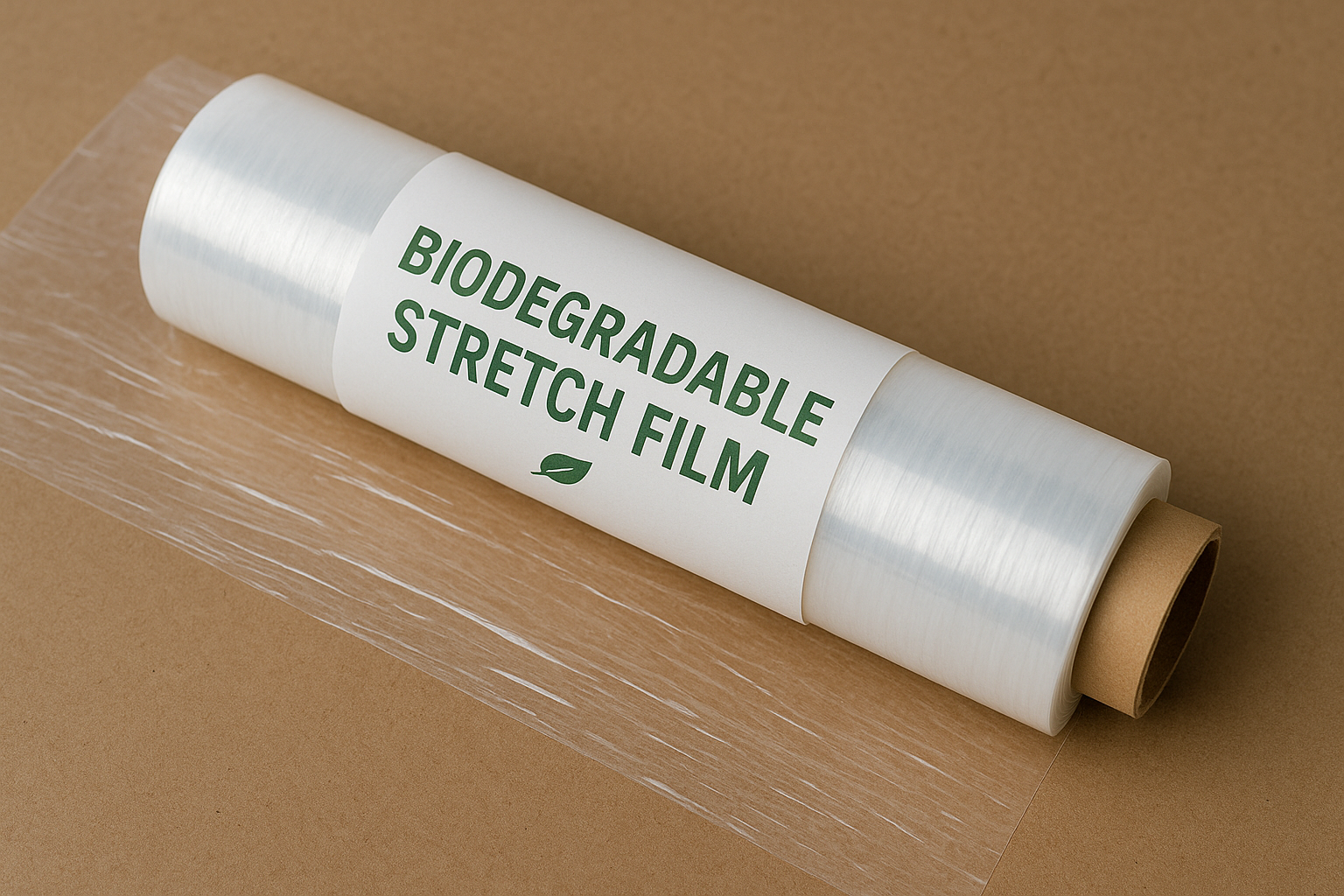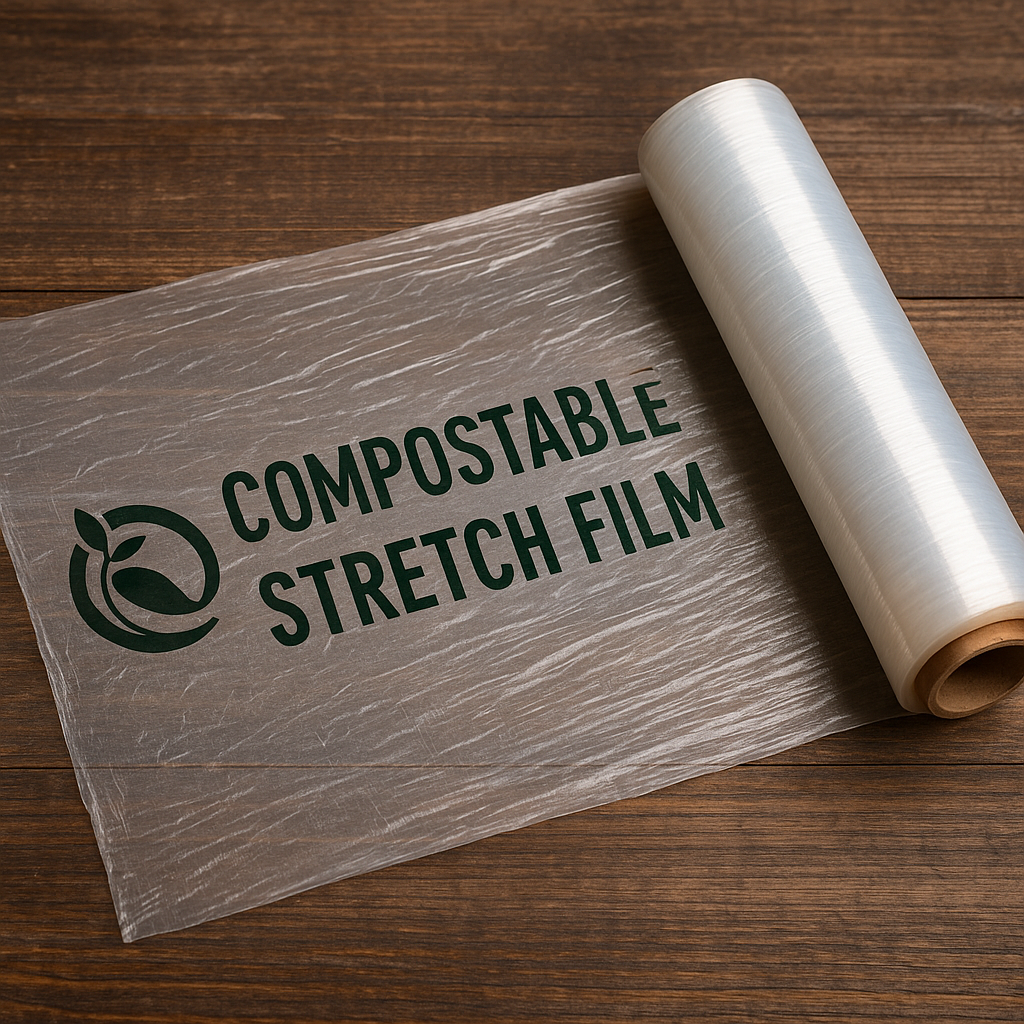
If your business is like many others nowadays, you’re searching for ways to make it more environmentally friendly. And a great method to accomplish this is with biodegradable stretch film! There are currently a number of biodegradable stretch films on the market. Each has advantages and disadvantages of its own. However, what kind of biodegradable stretch film is best for your company? Your unique sustainability and financial needs will play a big role in this. What works for your rivals might not work for you.
However, how can you choose the best kind of biodegradable stretch film for your business? Before making a purchase, you will need to think about a few factors in order to determine this. These include lead times, cost, material formulations, recyclability, composability (or lack thereof), and other relevant aspects of the film you want to buy.
You may choose the best kind of biodegradable stretch film for your business after reading this post.
How To Choose A Biodegradable Stretch Film
You must investigate the various kinds of biodegradable stretch film that are available and select one that satisfies the particular needs of your business. Throughout this procedure, you have to pick a movie that fits your business’s Recycled Content PET Shrink Film, sustainability, and budgetary requirements. You must examine different film brands before making a purchase in order to choose which one best suits your particular requirements. A straightforward Google search for “biodegradable stretch film” will display the top-performing movies as of right now on the first page of results that appears when you in your search term and press Enter. In order to select the ideal brand for your objectives, it is recommended that you compare at least two or three brands, making sure to evaluate each feature of the movie against the others.
The company that sells the material and each film brand should be compared during the comparison process. Tensile strength, available gauges and widths, pricing, lead times, product availability, sustainability, quality, and other relevant factors that are important to you as a customer should all be compared with the materials. Regarding the business itself, you should evaluate customer service, cost, reviews and testimonials from customers, the product expertise of salespeople, and the amount and caliber of stretch film-related content on each company’s website. However, one of the most important things to think about is if a stretch film that is compostable or biodegradable is the best option for your company. Since they are not the same thing, this is crucial.
Compostable VS Biodegradable Stretch Film
Whether you want a biodegradable or compostable stretch film is one of the most important factors to take into account when choosing the best kind for your company. Although it may seem strange to distinguish between these two kinds of environmentally friendly stretch films, there is a difference. However, how do biodegradable and compostable stretch films differ from one another? Which kind of movie best suits your requirements? To assist you in finding the best stretch film for your needs, we will compare biodegradable and compostable stretch films in the area below.
Biodegradable Stretch Film

Biodegradable stretch films are types of plastic wrap. It is a material that is developed according to nature and rapidly decomposes more than the usual plastic films. The intention is to use as a means of packing, bundling, and securing the products in a box-like method, and all this is with the help of the usual stretch film used in logistics, food, and retail industries. However, the distinction lies in that the stretch film is capable of decomposing by the participation of microorganisms (e.g., bacteria, fungi, or enzymes) which can occur depending on the state of the environment.
Good examples of materials made from these kinds of films are usually bioplastics (PLA, PBAT) and starch. The origin of these films could be found in bio-based plastics mixed with special additives to attain decomposition, such as the so-called oxo-biodegradable films. On the one hand, the biodegradable films without question contribute to the reduction of plastic trash in the long run but the speed and completeness of the decay depend heavily on the material itself and the disposal conditions (such as whether it is exposed to oxygen, heat, or water). We should be aware that not all the decomposing films are also compostable, and if they are thrown out incorrectly, they can even create microplastics. Besides this you can also read about Blue tea vs Green tea Benefits that is listed in our website.
Compostable Stretch Film

Stretch film can be produced from organic raw materials and is a packaging type that falls under the category of environmentally friendly packaging. It is designed to completely break down industrial composting processes into water, carbon dioxide, and biomass i.e., nature that can safely go back to the earth. There are both regular plastic and degradable films and the latter is not an end-of-life solution yet it might be even harmful leaving their residues and the eventual microplastics out; on the flip side, the compostable stretch film type is the one that does not just decompose but also destroys no toxic substances that make it safe for plants and people as stated by Marta.
Polylactic acid (PLA), PBAT (polybutylene adipate terephthalate), and starch-based compounds are some of the green and vegetation materials, which will commonly hold the ground in the case of a compost process for them to be useful for stuff such as this film. The performance of the biodegradable stretch film in terms of the damage to the environment is minimized significantly across several characteristics like extending and sticking, thus improving the same.
These certified materials are designed so that they can be industrially and domestically composted at the end of their life. Furthermore, using the independent organisms of the soil and their own enzymes during biodegradation, the plastic’s bulky mass would be changed in wavy form. Thus, like the organics present acting on the plastics, microorganisms are capable of singing a slow death with their preferred prey.
What Is The Difference Between Compostable And Biodegradable Stretch Film?

Even though both compostable and biodegradable stretch films are more Eco- friendly PET shrink film sleeve label than traditional plastic, they have differences in the way they are degraded, of what they are composed of, and what are the needed conditions for them to decompose.
- Breakdown process:
- Through natural microbial activity over time, biodegradable stretch film can be disintegrated. In this manner, the process can last from months to years and maybe the result is the presence of microplastics or chemical residues except when it is 100% biodegradable.
- Compostable stretch film, in suitable environments such as composting, gets converted into water, carbon dioxide, and biomass at a faster rate and more entirely as nothing is left that is toxic to the soil.
- Conditions of Decomposition:
- Generally, biodegradable films can go on degrading in various natural surroundings (landfills, soil, marine environments), although without some certain conditions like light, oxygen, or heat they cannot do it all up.
- As a rule, Compostable films degrade in sheets under certain conditions—frequently in industrial composting facilities where high temperatures, moisture, and oxygen are maintained. There are also some that are able to be put into a home composting system.
- Residue & Environmental Impact:
- Under circumstances of poor quality of the bioplastics used, biodegradable films will bring about both microplastics and toxins.
- Residues of compostable films are transformed into non-poisonous material, hence, they are more useful in organic waste systems and are the most perfect types of biodegradable.
- Certification Standards:
- Compostable films must meet rigorous global norms, such as ASTM D6400 (USA) or EN 13432 (Europe), for the decomposition process to be innocuous and fully performed.
- On the one hand, when it comes to biodegradable films there is no guarantee that these products are certified, while on the other hand, their quality and environmental safety levels may differ tremendously.
Is Compostable Or Biodegradable Stretch Film Right For You?
Determining whether or not it is better to use biodegradable or compostable stretch film depends on the type of packaging you have and the way you dispose of it. Compostable film becomes the best choice if you can use the industrial composting facilities which are available and is your choice and there is no residue left. In contrast, if composting is not a viable option and you are still interested in a quicker biodegradative solution for the replacement of regular plastic, the most practical would be a biodegradable film. Check the certificate and also the disposal method at the end of the life of the product before you decide what to buy.
